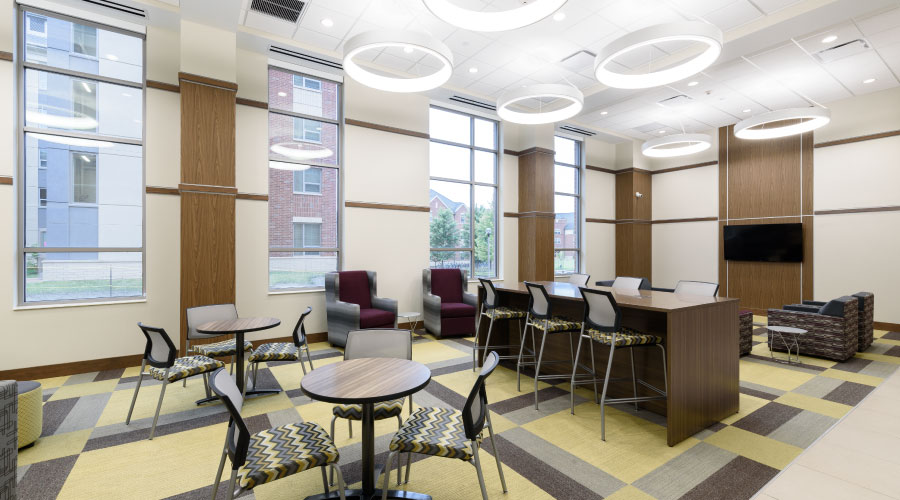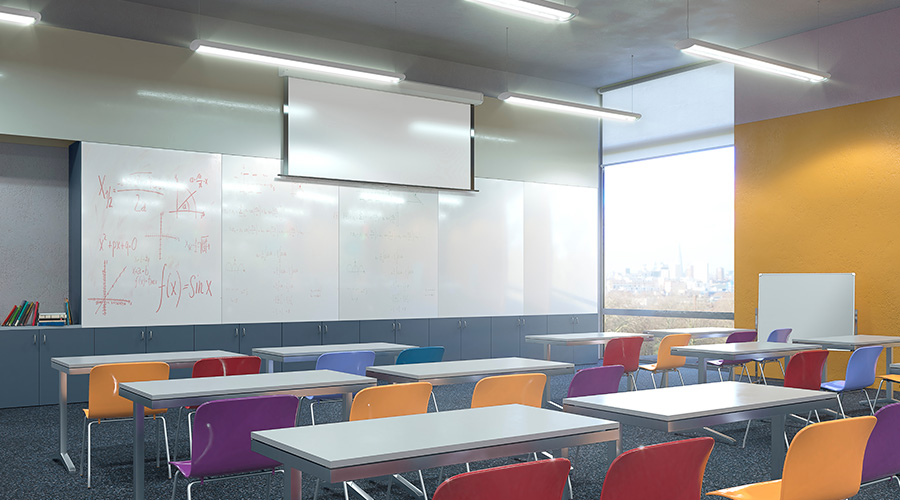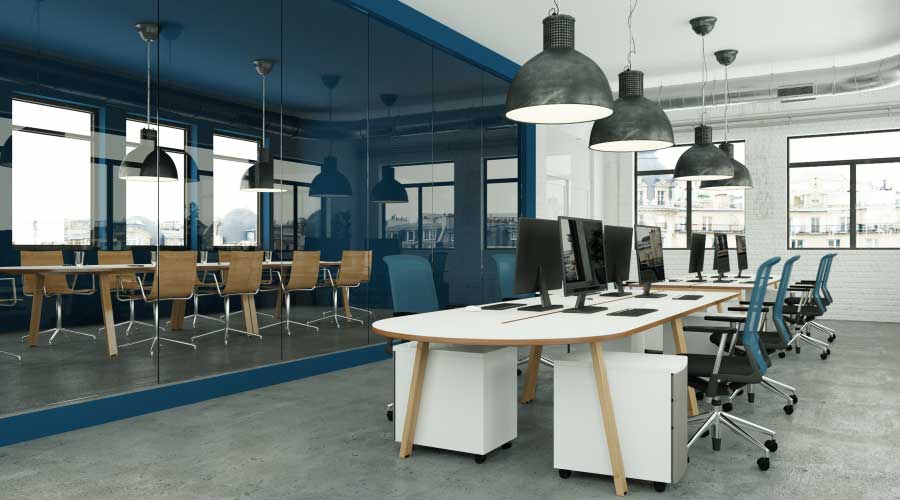Jail Lighting Upgrade Pays Dividends for County
Lighting upgrades in the Marion County, Florida jail have delivered benefits for staff, as well as the facilities department
By Dan Hounsell, Senior Editor
The challenges of upgrading any aging facility are daunting enough. But when the upgrade in question involves a correctional facility, the logistical issues are larger, and the stakes are higher.
Jared Goodspeed and his team know this situation well. As director of facilities management for Marion County, Florida, Goodspeed is overseeing lighting upgrades to the Marion County jail that have had to overcome the challenges to deliver a range of benefits to the facility and his department.
Planning the project
Goodspeed’s department oversees more than 350 buildings with over 3.2 million combined square feet. The facilities include fire stations, libraries, and large, multi-story judicial and government centers in Marion County, the state’s fifth largest county with1,588 square miles.
“Traveling that distance can really put a hurting on the efficiency,” Goodspeed says. “We focus on equipment and the longevity of it, and that relates to switching over to the proper lights. That's really a decision point for us — to eliminate that travel time based on the proper equipment that we use.”
The Marion County Jail was built in 1981 and consists of four inmate pods with 47,000 square feet each and a central support area with 35,000 square feet for a total 223,000 square feet. Two pods were added in 1991 with 38,000 square feet each. In 2010, construction brought on five more buildings for a total additional 155,000 square feet. The age of the jail has had an impact on its ability to perform as needed.
“Due to the age and lack of technology upgrades over the 41 years since its original construction, facilities began developing a plan to upgrade the infrastructure and replace outdated equipment, such as lighting and door controls,” says Goodspeed, adding that 2x4 T12 fluorescent fixtures have provided lighting in the jail.
One critical consideration in planning the lighting upgrade was the role of lighting in inmate behavior and overall security.
“During the remodel design, facilities and the sheriff's staff discussed areas of concern and opportunities to improve the safety and health of the staff and inmates,” Goodspeed says. “One comment was about the ability to dim the lighting in the common areas of the inmates' day rooms.
"When we walked it with the sheriff's deputies, they said, ‘If we can turn the lights off or dim them — they weren't dimmable before — it actually calms down the inmates. They wouldn't be loud, and they would eventually start to calm down.’ They said that in the morning or after they eat or before they go to bed, we can dim them, and that really can help psychologically control the inmate population.’” That consideration led to the inclusion of dimming capability in each pod.
Meeting the challenges
The project's scope was to replace the existing lighting in the jail’s six pods with energy-efficient LED fixtures to reduce utility costs and maintenance requirements stemming from lamp and ballast replacement. The project was approved in April 2022 and expected to be completed in March 2024.
“Only two pods remain to be completed, as this work is contingent on other upgrades being completed simultaneously and moving inmates for access by contractors,” Goodspeed says. “Pods A through D have averaged 2 and a half weeks each for the changeout.”
Among the challenges of upgrades in correctional facilities are scheduling access, ensuring technician safety and minimizing interruptions and the time needed to finish the job. The planning process required close cooperation between Goodspeed’s facilities team and jail management and staff.
“It's a work of art and a true testament of the teamwork from facilities with the sheriff deputies’ teams,” Goodspeed says. “When (deputies) vacate those pods, they can't move back in until we're done. If they have an increase in population, that really puts a strain on the project. Before we started, we met with the sheriff's team and came up with not one contingent plan but two or three. ‘If this or that happens, what do we do?’
“We walked it with them. We talked about what they needed. We had a consultant talk with them. It was absolutely a partnership in making this decision. We really felt comfortable with the preplanning. We knew that if something were to happen, we had a contingency plan to get people out and what to do with the inmates.”
To maximize the time available in the jail’s pods, Goodspeed’s team also performed upgrades of other critical systems, including the access control system, windows and the plumbing system, which will be changing from cast iron to PVC.
“That's what made the project be so long,” he says. “We didn’t want to go into A pod and do plumbing and then go back and close down A pod again for lights. Let’s close down that pod for this four-month timeframe and do everything at once.”
Assessing technology
In addition to careful scheduling and planning, successful lighting upgrades also require managers and technicians to focus on the lighting products and technology to be installed. In the case of the Marion County jail upgrade, Goodspeed says the facilities department’s electricians were involved in vetting the fixtures, which have been used in other facilities for nearly five years.
“Facilities management is responsible for selecting, specifying and researching products and materials used in the construction of all capital projects and vertical construction,” Goodspeed says. “We have developed a document that details our standards for products approved for use in county facilities and hold all contractors accountable for following it to the letter.”
The product research and selection process focused on components that have demonstrated their reliability.
“We try to look at what's been proven,” Goodspeed says. “As the government, we don't try to select the brand new item that just came out. We ask, ‘What's been out for a year? What's been vetted? What works?’”
In addition to training and education at state seminars and conferences for facilities management and engineering, Goodspeed says the department relies on insights from a network of facilities managers around Florida.
“We’re networking and partnering with our peers,” he says. “What's the ROI for LED? What's the next technology?”
The specification process also has enabled Goodspeed to standardize the products and components that go into each construction and upgrade project.
"We actually keep a standards manual for design and construction,” he says. “We're in control of capital projects. We manage all vertical construction, so when we build a new building, we put our standards into that new building.
“Technology changes every five to 10 years, but we do try to standardize. If there are issues with something for the warranty, you have one person to go to or one entity to deal with.”
As a result of the department’s attention to planning, scheduling, safety and product selection, the jail lighting system upgrade is paying dividends in several ways.
“The finished product has provided a cleaner and brighter dayroom experience, with the added benefit of being able to dim the lighting at night and other times to help calm the population,” Goodspeed says. The benefits extend to the maintenance workload for the department’s technicians.
“We've absolutely seen a reduction in calls for lights being out or any issues with the work environment when we've done these upgrades,” Goodspeed says. “In areas where people used to complain about getting headaches from lights or having lights out or flickering, those have disappeared.
“We've also been able to repurpose our technicians’ time to go and actually do more installations or other work versus constantly going into these large areas to change out fluorescent light bulbs.”
Dan Hounsell is senior editor for the facilities market. He has more than 30 years of experience writing about facilities maintenance, engineering and management.
Related Topics:












